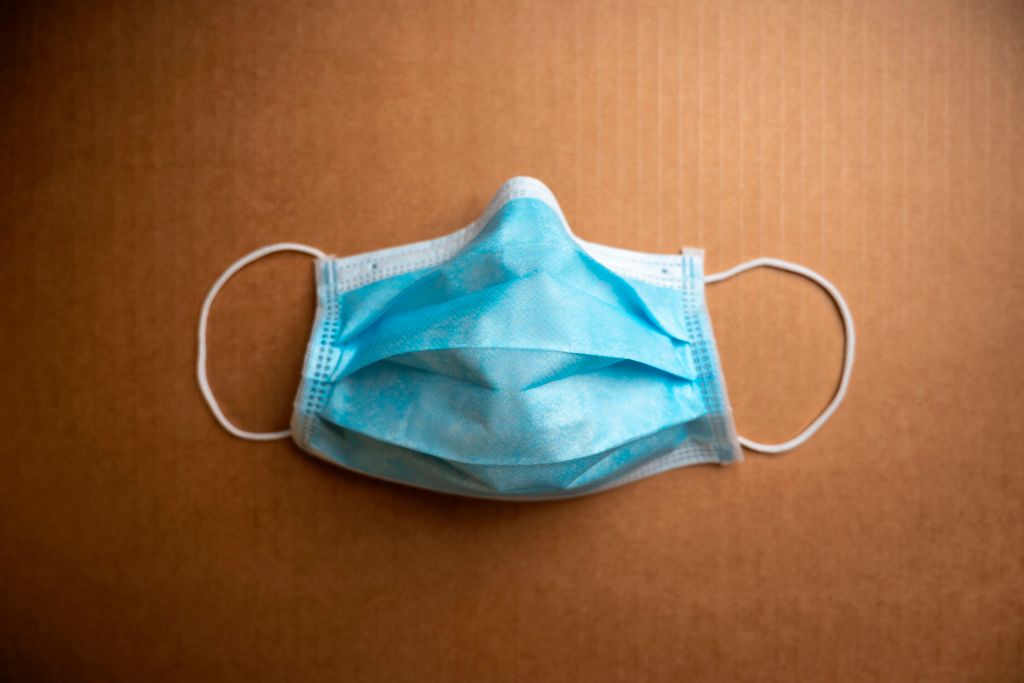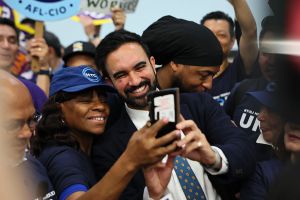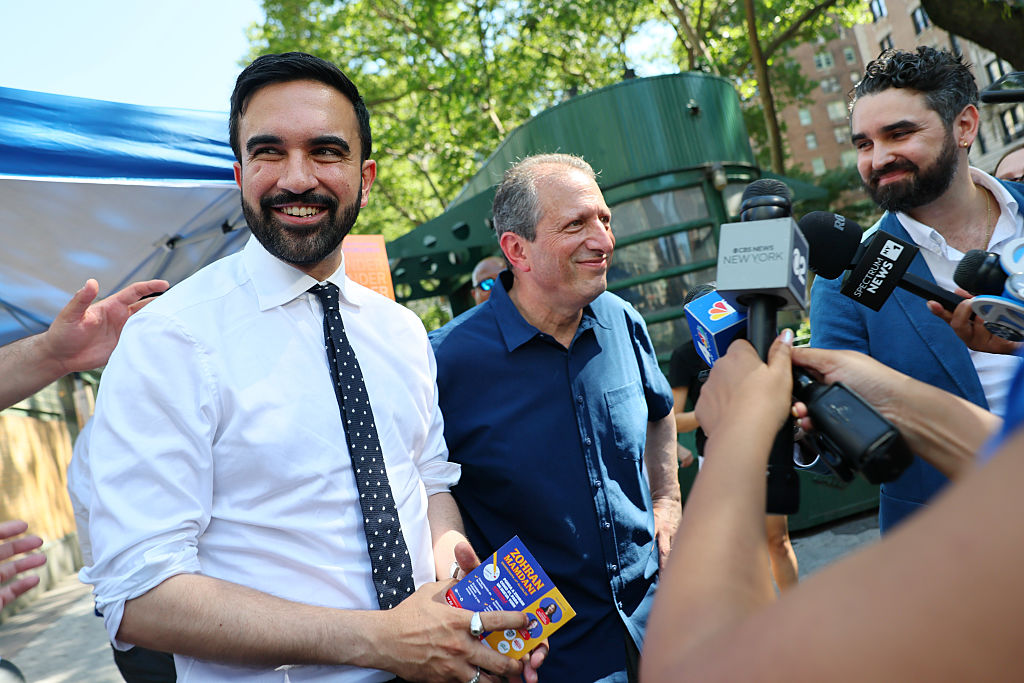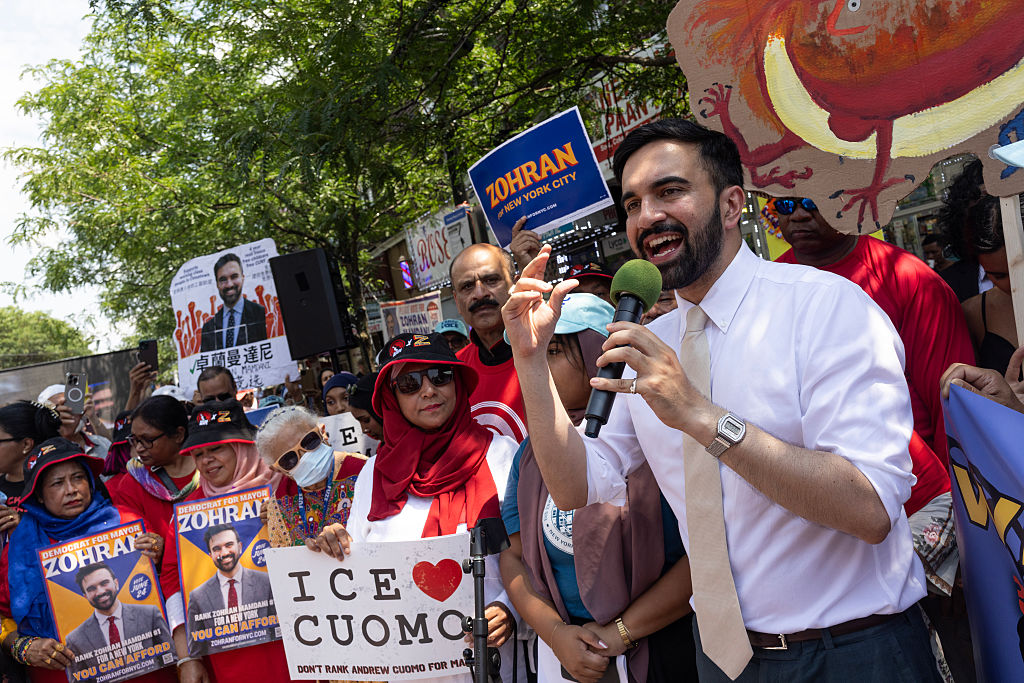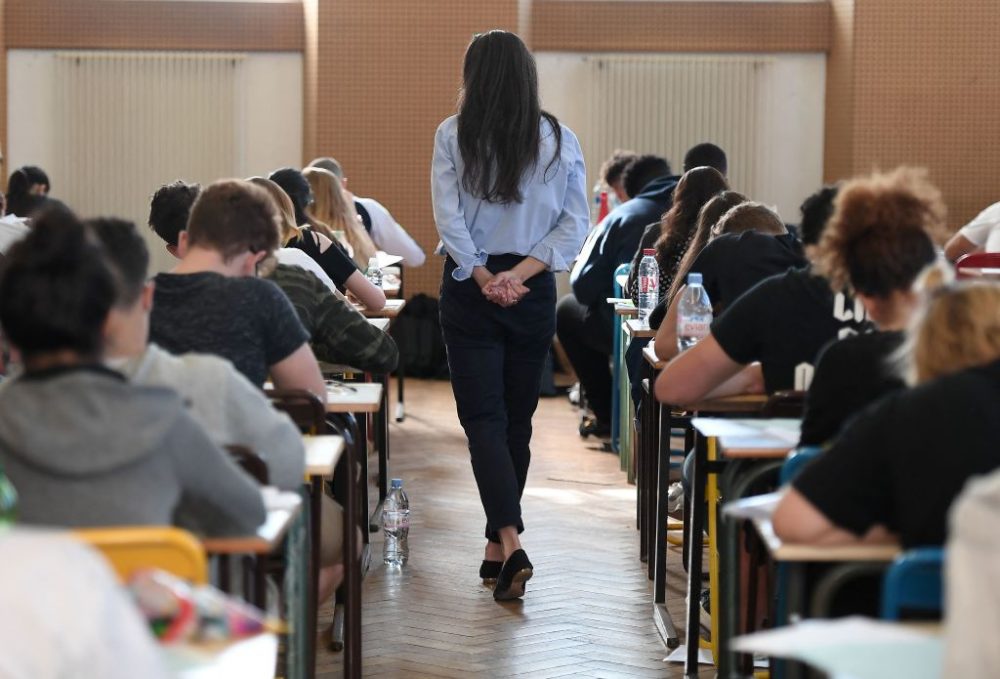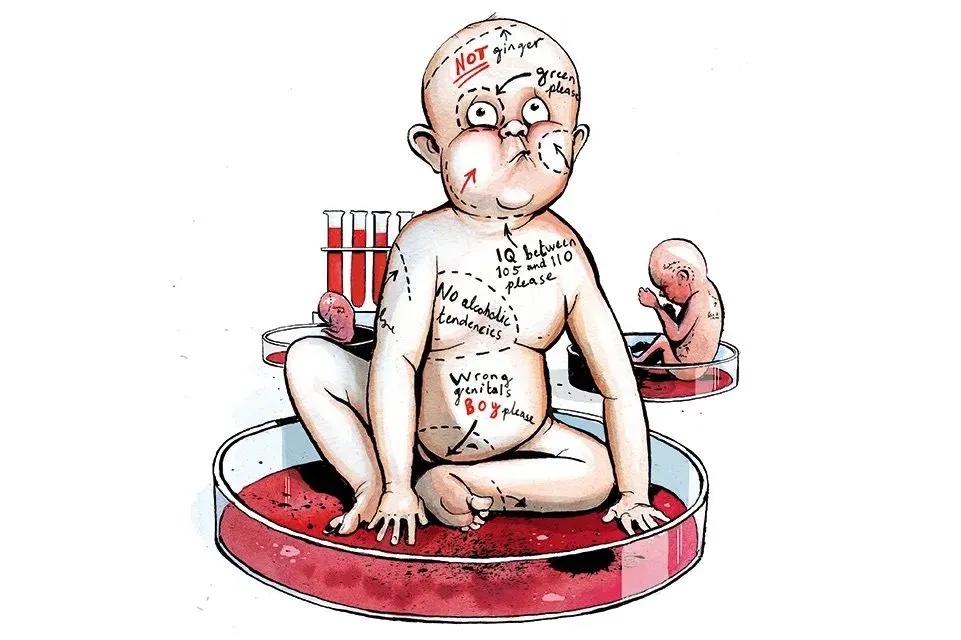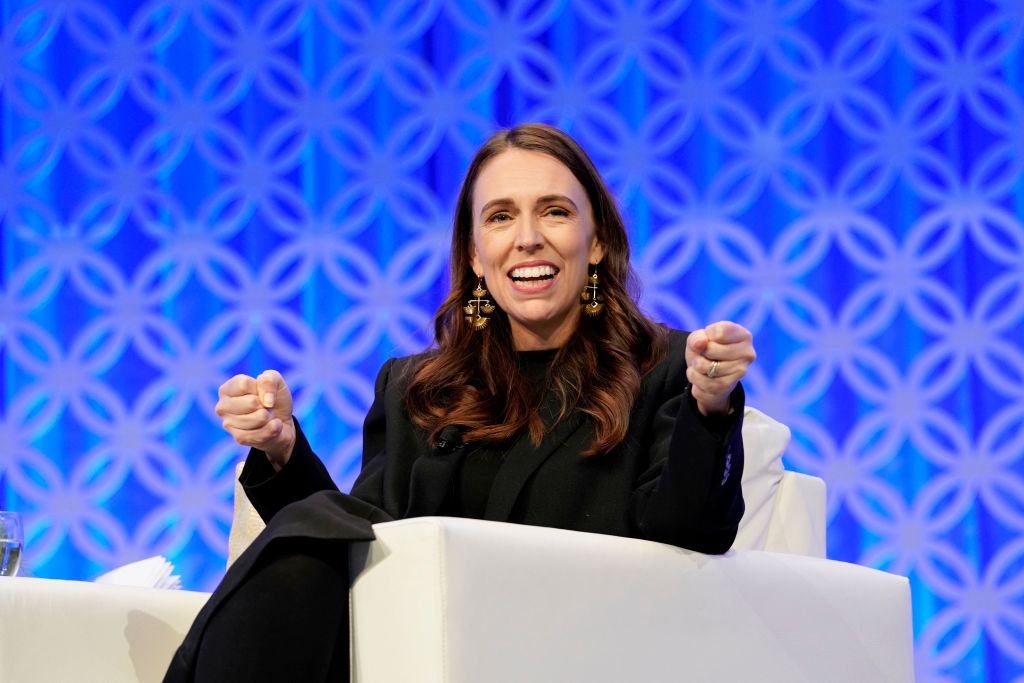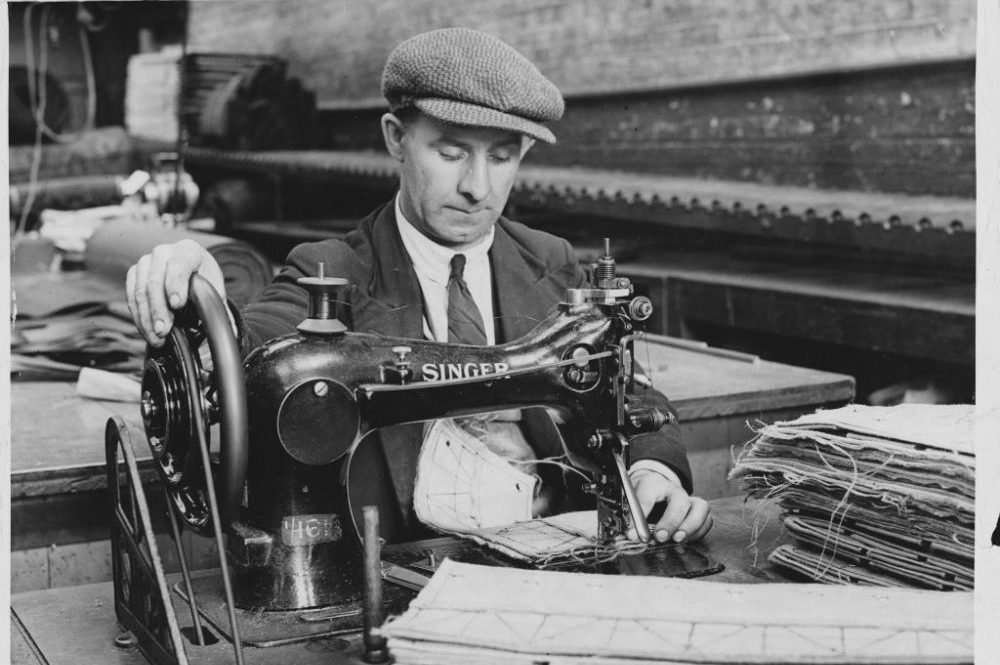The other night, I went to the Vermont State Fair in distinctly downscale Rutland, where my wife and I watched the pig races, ambled through the livestock exhibits, and examined the farm equipment, while enjoying corndogs and the crowd of distinctly overweight Rutlanders. The next day, I was back in my office in midtown Manhattan. A thin man wearing a mask got into the elevator with me and used a cloth to press the elevator button. Then he used the cloth to open the two doors to the street. He was clearly annoyed to have had to share the elevator with a maskless heathen.
As he walked away, it occurred to me that I hadn’t seen a single mask or Covid-crazed person of any sort at the Vermont State Fair. Yet here in New York, the cosmopolitan capital of the United States, there are still people who act like they stepped out of Defoe’s Journal of the Plague Year. This comes after the CDC announced its general amnesty: masks don’t work; never did; never mind all that social distancing. We were wrong, said the insufficiently contrite CDC, after having plunged the economy into an unnecessary shutdown, obliterated education for more than a year, and instilled terror into the hearts of millions of Americans incapable of reading statistics or independently assessing medical information.
I realize that in saying this I make some of my readers as furious as the mechanical bull at the State Fair after the carney has flipped the switch. That’s one thing the CDC has proved expert at: flipping the switch.
Vermont was not exempt — far from it. The state also went crazy with Covid hysteria for a while. But then the people got over it. The madness wasn’t permanent, as in New York City. Perhaps the permanent cases in Vermont stayed away from the pig matchups. In any case, I am intrigued by the contrast between the relaxed rural Americans and the uptight urbanites.
There is a lot more to it, of course. Manhattan has sky-high crime, a heedless district attorney, an inept mayor, and woke insanity across every venue. Vermont is a very liberal state but clearly not in the midst of social breakdown. New York City is more fragile.
I have no handy explanation for that. As for politics, NYC and Vermont are very similar. The Green Mountain State extols Bernie. The Big Apple boasts of AOC. One can tease out differences but in truth these are solidly blue parts of the American landscape. Rutland and New York are both “sanctuary cities” and both host newspapers (the Rutland Herald, the New York Times) that relentlessly hawk progressive narratives. But when it comes to how people in general treat one another, there is a chasm between the two places. Most New Yorkers these days eye one another with suspicion, as though expecting each passerby is just waiting for the chance to shove an unwary person in front of a bus or the subway tracks. Vermonters, by contrast, greet strangers with a wave and seem just waiting for the chance to strike up a conversation.
I don’t say this sentimentally. I am not always looking for a conversation. I say it ethnographically. Something beyond mere courtesy seems ambient in this little New England state. What is going on? One difference, I suppose, is that Vermont has very relaxed gun laws, while New York City makes it very difficult to be armed. That might put a Second Amendment premium on being nice to strangers on the rural byways, though I’ve never actually seen anyone walking around with an AR-15 or a holstered handgun.
A better explanation, perhaps, is that fear of random violence in Vermont is largely unknown. The murder rate in Rutland as of 2018 (latest figures) with a population of 15,300 was a whopping 0.0 percent. That will change in 2022. In June, Sincere Johnson, age 46, was shot to death in Rutland, and two suspects, Michael O’Brien (35) and Courtney Samplatsky (34), were apprehended on the lam after breaking into a post office in New Hampshire. Johnson, the victim, was black and from New York City; O’Brien and Samplatsky are white native Vermonters from a village near Rutland. Arresting detail: in their heavy-lidded mugshots, O’Brien and Samplatsky both have Covid masks pushed below their chins. Murders, of course, are not unknown in Vermont, but they often seem to be connected with the drug trade recently imported from New York.
In Vermont, however, the police still seem inclined to arrest people for crimes and the prosecutors and courts also seem to take public safety pretty seriously. It could be that those attitudes filter down to ordinary people. As for my mentioning a particular case, all I can do is paraphrase Tip O’Neill’s apothem about politics: all homicides are local. Although in NYC, it is hard to keep up. We had 47 murders in the five boroughs in July. As Bloomberg News recently noted, “In January, a Deloitte consultant was shoved in front of a train at Times Square and killed. In April, a man fired a handgun at least 33 times on a packed subway car traveling from Brooklyn to Manhattan. In May, a Goldman Sachs Group Inc. employee was shot and killed while riding the Q train on the way to brunch. There were 639 shooting incidents in the city in the first six months of 2022.”
That makes crime the likeliest suspect for New York City’s jitters and Rutland’s tranquility. But I suspect there is a lot more beneath the surface. Both cities overreacted to the Covid virus. For a while, Rutland was in full panic, despite a very low number of “cases” and a total reported mortality of 80 for the whole pandemic. Like everywhere else, the official mortality rate was exaggerated by a failure to distinguish people who died of other causes but having tested positive for the virus.
But at some point, the Rutland panic simply evaporated like a puddle in the afternoon sun. Meanwhile, New York City is rife with people who seem to be making a vocation of their fear. No number of boosters, masks, disinfectants, and yards of “social distance” will restore their sense of safety — if they had it to begin with.
The sheer scale of New York may be part of the reason for this obdurate panic. Because there are lots more people than can be found in that rural bastion of Rutland, there must be proportionally more cases of Covid hysteria, no? I don’t think that is it. For one thing, New York City is constantly reinforcing rules that we now know are senseless. Passengers on subways and buses are required to be masked, though about a third of us ignore the injunction. Go to a Broadway play or a Carnegie Hall concert, and as an audience member you are required to be masked. Most places of business — but not all — are now “mask optional,” but a fair number of them might be better described as “mask preferred.”
These masks do nothing at all by way of preventing the transmission of Covid-19. Anyone who bothers to read the details knows that Covid-19 viral particles range from .07 to .09 micrometers. One whole micrometer is 0.000039 inch. Even an N95 mask is too porous to stop particles in the .07-.09 range. N95 masks can filter only down to .3 microns. And, of course, most of the masks people wear around New York are nowhere near as tightly woven as N95.
So Covid masks are theater, superstition, virtue-signaling, fashion, obsession, or something else in the realm of mere display. The reasons many New Yorkers continue to obey this summons surely vary, but some distinctions seem easily at hand. New York’s public transportation is suffering from a precipitous drop in ridership. The subways have lost 40 percent of their pre-pandemic riders since before the pandemic. The bureaucrats figure that assuring the most timid among us that Covid is not sharing the ride is a good way to get people aboard. One might think that securing the subways from violent felons and madmen would be more reassuring, but mask mandates are easier to impose.
In any case, the rhetoric of public safety plainly ricochets. The more we are told that we should take precaution against the phantom danger, the more the danger seems real and the more fearful we become. Rutland, incidentally, has a bus service, creatively called “The Bus.” Masks were required on The Bus until April 2022, shortly after the District Judge Kathryn Kimball Mizelle struck down the CDC’s national mask mandate, though Rutland continued to recommend them.
By deploying public authority, New York City touches on yet another psychological vulnerability: the eagerness of some people to submit to the powers that be. New Yorkers are often misperceived to be independent-minded and self-willed. In truth, many are eager conformists and will quickly obey any City Hall pronouncement no matter how inane.
But there is no firm line dividing this eagerness to submit from other susceptibilities. Some rationalize their masks as perhaps doing no good but certainly doing no harm — a mere precaution. The harms, however, are real and plentiful. The masks deprived young children of seeing human faces for over a year, and it is still painful to watch toddlers and school children out for a stroll garbed like burn victims. Then there is the matter of contributing to the dire atmosphere of the city by acting as though the emergency persists.
Masking and other such measures are efforts to control the uncontrollable. That’s the element of superstition, which instead of relieving anxiety actually sharpens it. The maskers are also notorious for their attempts to gain a degree of control over others, by shaming them for not wearing masks or by asserting their own superior status (“I’m among the good”). Every NYC non-masker I know has stories about aggressive maskers launching into a tirade about social responsibility, Faucian science, and the CDC.
I’ve never seen or heard anything like that in Rutland. Not that I am eager to push Rutland as America’s model city. It is far from it. Its attractions after the last pig has raced and the demolition derby has crashed to a conclusion are a bit thin. But it is my foil in this article to America’s greatest city, which is trapped in an extended moment of inanition, an exhaustion born of communal fear. That fear has several roots: incompetent government, widespread lawlessness, the panic of an invisible virus that killed some and sickened many, an authoritarian health system that attempted to enlist the public into a suitably uniformed and vaxxed mob, and a portion of the population trapped inside this cultural pathology.
Nothing is forever. New York City will one day climb out of this ditch — but I think not soon. My office in midtown is still surrounded by empty high-rises, and many of the white collar folks I know work in-office only one or two days a week. I’m among the 8 percent who still come in five days a week. Several of my friends belong to the new class of remote workers who have moved upstate or are working remotely from a hilltop in Vermont. Some of my fellow New York scribes pen essays on the irreversible decline that has set in — and are making plans to move to Florida. Others argue that the future lies in converting the now vacant office buildings into attractive new housing and rezoning the city back to life.
That might work, but the first step is surely to turn people away from the idolatry of fear that now pervades the city. Good laws faithfully enforced by leaders who see a path other than rule by perpetual panic would help. And maybe a pig race. Though I lost my bets on Sizzlin’ Sausage and Tyrone the Terrible, I came away from the Vermont State Fair with a new appreciation for corndogs and a sense that things are okay even in blue-state America.



